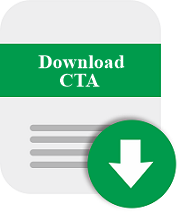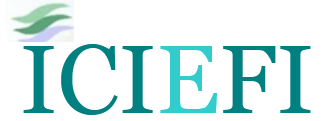Dual Banking System Stability Index in the Shadow of COVID-19 Pandemic
Abstract
The financial system is categorized as stable if there is no excessive volatility from financial pressures or crises. The IMF indicates that the crisis is not only related to one element but more than two or three elements of the crisis. The banking system's stability is measured by the banking stability index, gauging the effectiveness of monetary policy and financial risk. This study aims to measure the stability of the Indonesian banking system in the dual banking system model. The indicator to measure banking stability used the Z-score statistic based on fluctuations of Return on Assets for each type of bank. The Markov Switching Vector Autoregressive (MSVAR) model method was used to analyze the volatility of banking stability. Independent variables used included credit risk (NPL), Loan to Deposit Ratio, Liquidity Risk, Net Interest Margin, Capital Adequacy Ratio, Money Market Rate, Inflation, Gross Domestic Product, Federal Reserve rate, and Exchange Rate. The results of the regime switch analysis concluded that Indonesia's banking stability experienced a structural break due to the effects of the pandemic in April 2020. Based on the average Z-score value, the Islamic banking stability index was higher than conventional banking. In other words, Islamic banking was more stable than the conventional banking system. The Islamic banking stability index (iZscore) was significantly influenced by the level of Net Operating Margin, Financing to deposit ratio, Potential Loss Profit Sharing, Islamic Money Market Rate, and Exchange Rate. However, non-performing financing did not affect Islamic banking stability since the profit-sharing system implemented by Islamic banking stability was more influenced by the ratio of potential loss and profit-sharing system.
Keywords
Full Text:
PDFReferences
Abedifar, P., Molyneuxtc, P., & Tarazi, A. (2012). Risk in Islamic banking. Review of Finance, 17(6), 2035–2096, doi: https://doi.org/10.1093/rof/rfs041
Albuquerque, P., & Rajhi, W. (2019). Banking stability, natural disasters, and state fragility: Panel VAR evidence from developing countries. Research in International Business and Finance. (50), 430-443.
Alqahtani, F., & Mayes, D. G. (2018). Financial stability of Islamic banking and the global financial crisis: Evidence from the Gulf Cooperation Council. Economic Systems, 42(2), 346–360.
Bai, J. , Peron, P. (2003). Critical values for multiple structural change tests. Econometrics Journal 1, 1-7.
Barattieri, A., Eden, M., Stevanovic, D. (2020). Risk sharing, efficiency of capital allocation, and the connection between banks and the real economy. Journal of Corporate Finance.
Cihak, M., & Hesse, H. (2008). Islamic banks and financial stability: An empirical analysis, IMF Working Paper WP/08/16.
Cihak, M., & Hesse, H. (2010). Islamic banks and financial stability: An empirical analysis. Journal of Financial Services Research, 38(2), 95-113.
Chow, G.C. (1960). Tesis of equality between sets of coefficients in two linier regressions. Econometrica, Vol. 28, 591-605.
Donthu, N., & Gustafsson, A. (2020). Effects of covid-19 on business and research. Journal of Business and Research, 117, 284–289.
Elnahass, M., Trinh, V. Q., & Li, T. (2021). Journal of International Financial Markets , Institutions & Money Global banking stability in the shadow of Covid-19 outbreak. Journal of International Financial Markets, Institutions & Money, 72, 101322. https://doi.org/10.1016/j.intfin.2021.101322
Gadanecsz, B., Kaushik, J. (2008). Measures of Financial Stability – A Review. Irving Fisher Committee Bulletin, no. 31, pp. 365–383.
Ghosh, S. (2011). A simple index of banking fragility: Application to Indian data: Reserve Bank of India, Mumbai, India. The Journal of Risk Finance. 12(2), 112-120.
Gorton, G., & Winton, A. (2003). Financial intermediation. In GM Constantinides, M. Harris, & RM Stulz (Eds.), Handbook of the Economics of Finance (Vol.1, Issue SUPPL. PART A, pp. 431-552). Elsevier Masson SAS. https://doi.org/10.1016/S1574-0102(03)01012-4.
Gujarati, D. N. (2003). Basic Econometric (4th ed). New York: McGraw-Hill.
Hamilton, J.D. (1989). A New Approach to the Economic Analysis of Nonstationary Time Series and the Business Cycle. Econometrica, Vol. 57, No. 2, 357-384.
Hasan, Z. (1995). Economic Development in Islamic Perspective: Concept, Objectives, and Some Issues. Journal of Islamic Economics, 1(6), 80–111.
International Monetary Fund (IMF). (2015). IMF elibrary data. Washington, DC: International Monetary Fund.
International Monetary Fund (IMF). (2020). World economic outlook, April 2020: The Great Lockdown.Retrived from: www.imf.org/en/Publications/WEO/Issues/2020/04/14/weo-april-2020. [Accessed 14 April. 2020].
Kabir, M. N., Worthington, A. & Gupta, R. (2015). Comparative credit risk in Islamic and Conventional Bank. Pacific-Basin Finance Journal, Elsevier, Vol. 34,327-353.
Kočišová. (2011). Banking Stability Index : A Cross-Country Study. ResearchGate, 197–208.
Krolzig, H. (1997). Markov-switching vector autoregressions modeling, statistical inference, and application to business cycle analysis (PDW (Institut fur MW Fandel, Prof. Dr. G. (Fachbereich Wirtschaftwissenschaften); Trockel (ed.)). Berlin Heidelberg: Springer-Verlag
Krolzig, H. M. (2000). Predicting markov - switching vector autoregressions., Working paper. Oxford: Department of Economics and Nuffield College Oxford.
Lee, C. C., & Lee, C. 2019. Oil Price Shocks and Chinese Banking Performance: Do Country Risks Matter?. Energy Economic, Vol. 77, 46-53.
Martin, Č., & Hesse, H. (2010). Islamic Banks and Financial Stability : An Empirical Analysis. 95–113. https://doi.org/10.1007/s10693-010-0089-0
Nurfalah, I., & Rusydiana, A. S. (2021). The regime switching of cycle instability of Islamic banking and the economy: Evidence from Indonesia, Malaysia and Pakistan. Journal of Islamic Monetary Economics and Finance, 7 (2 ), 233-262.
Nurfalah, I., Rusydiana, A. S, Laila, N., & Cahyono, E. F. (2018). Early warning to banking crises in the dual financial system in Indonesia: The Markov switching approach. Journal of King Abdul Aziz University, 31(2), 133–156. https://doi.org/10.4197/Islec
Ozili, P. K. (2018). Banking stability determinants in Africa. International Journal of Managerial Finance, 14(4), 462–483.
Rajhi, W., & Hassairi, S. A. (2013). Islamic banks and financial stability: A comparative empirical analysis between MENA and Southeast Asian Countries. SSRN Electronic Journal, 37, doi: 10.2139/ssrn.2010126.
Reinhart, C. M, & Rogoff, K. S. (2013). Financial and sovereign debt crises: Some lessons learned and those forgotten. IMF Working Paper, 13(266).
Risfandy, T., Tarazi, A., & Trinugorho, I. (2020). Competition in dual market: Implications for banking system stability. Global Finance Journal.
Ryu, D., & Yu, J. (2021). Nonlinear Effectof Subordinated Debt Changes on Bank Performanc. Finance Research Letters.
Sanchez, C., Garcia, V. Marques, A. I., & Sanchez, J. S. (2016). Financial distress prediction using the hybrid associative memory with translation. Applied Soft Computing Journal. 44. 144-152.
Sharma, P., Leung, T. Y., Kingshott, R. P., Davcik, N. S., & Cardinali, S. (2020). Managing uncertainty during a global pandemic: An international business perspective. Journal of Business and Research. 116, 188–192.
Schaeck, K., & Cihak, M. (2014). Competition, efficiency, and stability in banking. Financial Management 43(1), 215-241.
Tong, H., & Lim, K. S. (1980). Threshold autoregression, limit cycles and cyclical data. Journal of the Royal Statistical Society. Series B (Methodologica), Vol. 42, No. 3, 245-292.
Untoro., R. Priyo. & A. Widodo. (2014). The review of the use of payment instruments as macroeconomic leading indicators. Wp/6/2014 Working Paper of Bank Indonesia.
Van Dijk, D., Terasvirta, T., & Franses, P.H. (2002). Smooth transition autoregressive models: A survey of recent developments. Econometric Reviews, Taylor & Francis Journals, Vol. 21(1), 1-47.
Zahra, S. F., Ascarya & Huda, N. (2018). Stability measurement of dual banking system in Indonesia : markov switching approach. 10(1), 25–52.
DOI: https://doi.org/10.18196/ijief.v5i1.11837
Refbacks
- There are currently no refbacks.
Copyright (c) 2022 International Journal of Islamic Economics and Finance (IJIEF)

This work is licensed under a Creative Commons Attribution-ShareAlike 4.0 International License.
International Journal of Islamic Economics and Finance (IJIEF)
International Program for Islamic Economics and Finance
Department of Economics
Faculty of Economics and Business
Universitas Muhammadiyah Yogyakarta
Pascasarjana Building, Ground Floor
Jl. Brawijaya (Ringroad Selatan), Kasihan, Bantul
D.I. Yogyakarta 55183, INDONESIA
Official email: ijief@umy.ac.id












1.jpg)